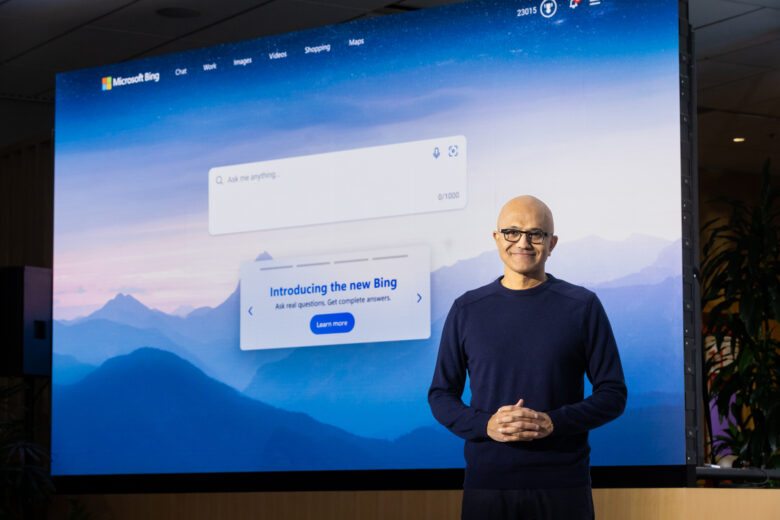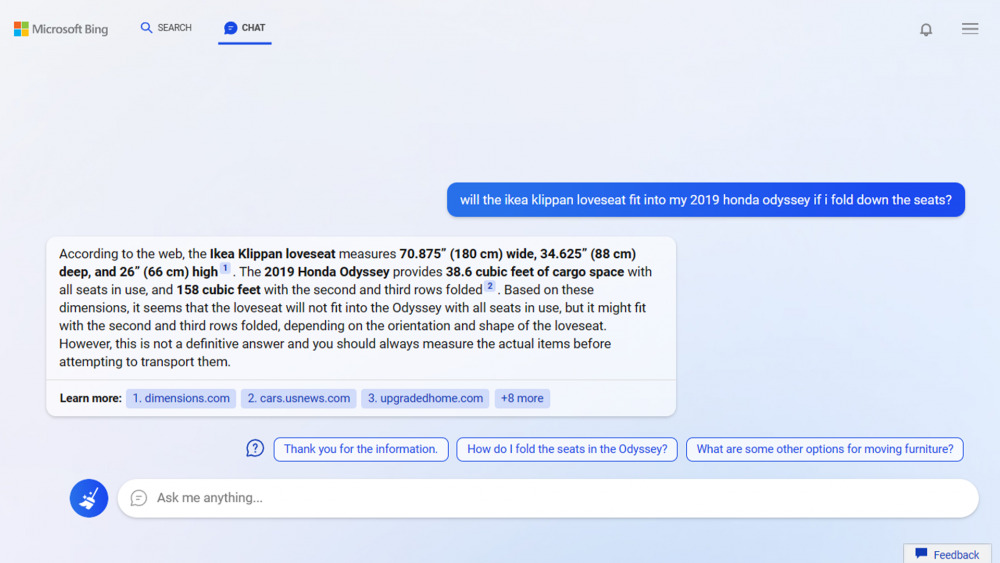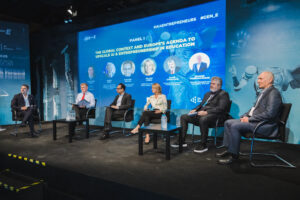ChatGPT will provide Microsoft with data for personalized advertising

It’s not just an attempt to lure users away from the dominant services Bing and Chrome. With the new integration of AI technologies from the startup OpenAI in the search engine Bing and the browser Edge, the software giant is also involved with the digital advertising business. A side note has already been stated: AI should ensure that the ROI (Return On Investment) for advertisers is improved. Meaning: The integration of the improved versions of ChatGPT and GPT-3 in Bing has a commercial character.
This is what Microsoft’s ChatGPT attack on Google Search and Chrome looks like
First of all, you have to know one thing: While the Alphabet group earns about 90% from Google and YouTube advertising ($250+ billion per year), Microsoft’s digital advertising business is only a comparatively small amount. At the end of 2022, however, the goal was still formulated of wanting to double sales from 10 to 20 billion US dollars per year. Then they would at least catch up with Google, Facebook, Amazon, TikTok, or Apple. In this respect, Microsoft has a lot less to lose than Google if the chat-based AI advertising thing doesn’t bear fruit.
“Rethink traditional advertising”
In any case, Microsoft’s advertising chief Rob Wilk is already giving out the message to advertisers: “The potential of this new technology is still being explored, but we know that this fundamental change of the search engine experience will give us new opportunities to rethink traditional ad experiences – together.” So what will the ads look like in the AI’s text responses? Brand names are already appearing in the first chats, such as the furniture store Ikea or the car manufacturer Honda. It remains to be seen whether they will be able to pay to appear in the Bing responses (or even be mentioned as an alternative to competitors) in the future.

If millions of people start chatting with Bing (and the OpenAI technology behind it), then it could be a real treasure of data for Microsoft. In any case, manager Wilk expects more precise and deeper targeting data. “Microsoft’s ability to understand complex queries in greater depth and precision, as well as the rich insight we will gain into user intent through deep conversational engagement, will deliver smarter and more actionable opportunities for advertisers to engage with customers,” he writes.
And further: “With deeply personalized experiences we expect to be able to deliver even more relevant messages to consumers, with the goal of improved ROI for advertisers. And as usage expands, we expect to see greater volume leading to more opportunities for advertisers to reach their desired customers.”
Chats are evaluated – also by people
The chats with AI that have become famous run at Microsoft under the product name “Bing Conversational Experiences”. It must be clear to every user that everything that is typed in there will also be evaluated. Incidentally, not only from artificial intelligence that calculates what you probably get the best answer but also from people. Microsoft reserves the right to pass on data to Microsoft employees or partner companies for verification. Here is the relevant passage in the terms of use:
“For example, our automated methods include artificial intelligence (AI), which we consider to be technology that enables computers to see context, learn, provide reasoning, and help with decision-making so that computers can solve problems in similar ways like humans. In order to train and improve the accuracy of our automated processing methods (including AI), we manually verify some of the predictions and inferences made using the automated methods. This is done using the underlying data from which the predictions and conclusions were made. For example, we manually review short snippets of speech data that we have anonymized to improve our speech recognition technologies.
It is also clear that AI technologies are very expensive due to the immense computing requirements. OpenAI costs about a million dollars a day for ten million users. Accordingly, as a cloud partner, Microsoft must have an interest in refinancing these high costs – and this should also be done in part through advertising.






























